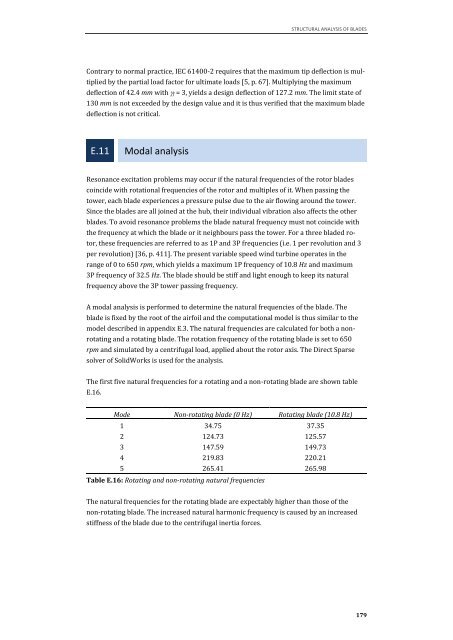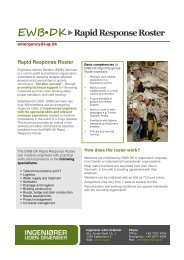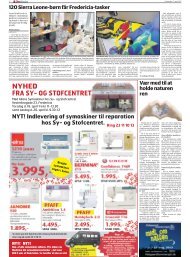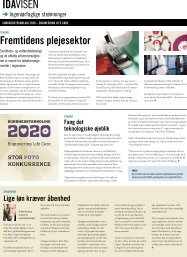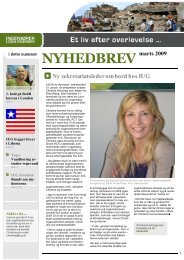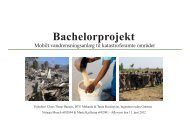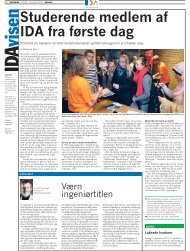Create successful ePaper yourself
Turn your PDF publications into a flip-book with our unique Google optimized e-Paper software.
STRUCTURAL ANALYSIS OF BLADES<br />
Contrary to normal practice, IEC 61400-2 requires that the maximum tip deflection is mul-<br />
tiplied by the partial load factor for ultimate loads [5, p. 67]. Multiplying the maximum<br />
deflection of 42.4 mm with �f = 3, yields a design deflection of 127.2 mm. The limit state of<br />
130 mm is not exceeded by the design value and it is thus verified that the maximum blade<br />
deflection is not critical.<br />
E.11 Modal analysis<br />
Resonance excitation problems may occur if the natural frequencies of the rotor blades<br />
coincide with rotational frequencies of the rotor and multiples of it. When pas<strong>sin</strong>g the<br />
tower, each blade experiences a pressure pulse due to the air flowing around the tower.<br />
Since the blades are all joined at the hub, their individual vibration also affects the other<br />
blades. To avoid resonance problems the blade natural frequency must not coincide with<br />
the frequency at which the blade or it neighbours pass the tower. For a three bladed ro-<br />
tor, these frequencies are referred to as 1P and 3P frequencies (i.e. 1 per revolution and 3<br />
per revolution) [36, p. 411]. The present variable speed wind turbine operates in the<br />
range of 0 to 650 rpm, which yields a maximum 1P frequency of 10.8 Hz and maximum<br />
3P frequency of 32.5 Hz. The blade should be stiff and light enough to keep its natural<br />
frequency above the 3P tower pas<strong>sin</strong>g frequency.<br />
A modal analysis is performed to determine the natural frequencies of the blade. The<br />
blade is fixed by the root of the airfoil and the computational model is thus similar to the<br />
model described in appendix E.3. The natural frequencies are calculated for both a non-<br />
rotating and a rotating blade. The rotation frequency of the rotating blade is set to 650<br />
rpm and simulated by a centrifugal load, applied about the rotor axis. The Direct Sparse<br />
solver of SolidWorks is used for the analysis.<br />
The first five natural frequencies for a rotating and a non-rotating blade are shown table<br />
E.16.<br />
Mode Non-rotating blade (0 Hz) Rotating blade (10.8 Hz)<br />
1 34.75 37.35<br />
2 124.73 125.57<br />
3 147.59 149.73<br />
4 219.83 220.21<br />
5 265.41 265.98<br />
Table E.16: Rotating and non-rotating natural frequencies<br />
The natural frequencies for the rotating blade are expectably higher than those of the<br />
non-rotating blade. The increased natural harmonic frequency is caused by an increased<br />
stiffness of the blade due to the centrifugal inertia forces.<br />
179


